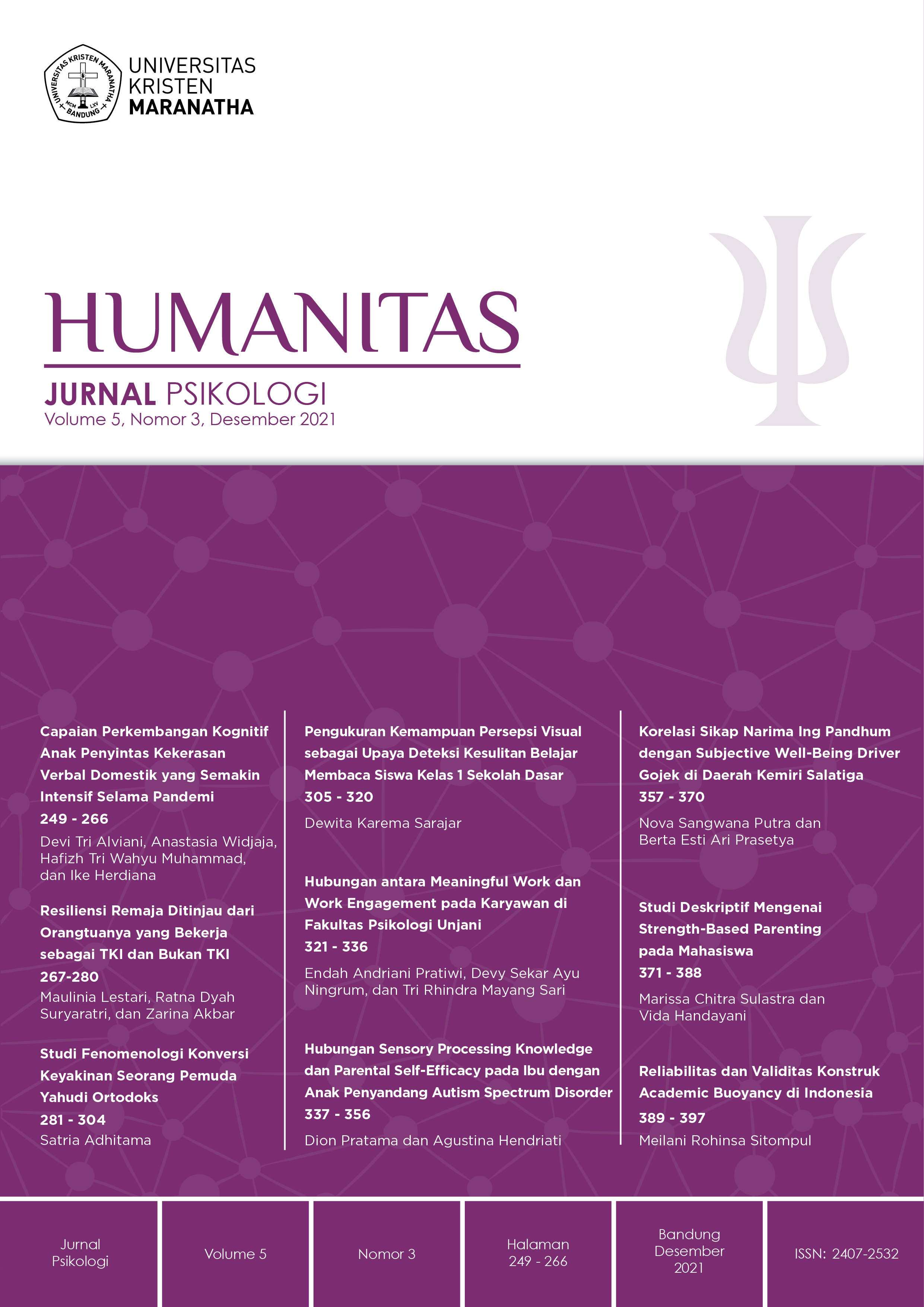Pengukuran Kemampuan Persepsi Visual sebagai Upaya Deteksi Kesulitan Belajar Membaca Siswa Kelas 1 Sekolah Dasar
Isi Artikel Utama
Abstrak
Kemampuan persepsi visual merupakan kemampuan menginterpretasikan dan mengorganisasikan informasi visual. Kemampuan ini berkaitan dengan kemampuan menginterpretasi stimulus visual yang berperan dalam proses belajar anak salah satunya belajar membaca. Tujuan dalam penelitian ini adalah untuk mengukur dan menggambarkan kemampuan persepsi visual siswa kelas 1 Sekolah Dasar sebagai upaya untuk mendeteksi kesulitan belajar membaca. Pengukuran persepsi visual menggunakan Marianne Frostig Developmental Test of Visual Perception (Tes Frostig) yang mengukur aspek persepsi visual seperti koordinasi mata dan motorik, pengenalan bentuk yang tersembunyi, persepsi bentuk yang konsisten, persepsi bentuk dalam berbagai posisi serta hubungan spasial. Pengumpulan data dilakukan dengan menghitung skor tes Frostig yang disajikan pada subyek. Subyek dalam penelitian ini sejumlah 64 orang anak berusia 6-8 tahun yang terdaftar sebagai siswa kelas 1 Sekolah Dasar. Hasil penelitian menunjukkan rendahnya skor pada beberapa subtes Tes Frostig dapat menjadi indikasi adanya kesulitan belajar membaca pada siswa.
Kata kunci: persepsi visual, kesulitan belajar membaca, tes frostig
Kata kunci: persepsi visual, kesulitan belajar membaca, tes frostig
Unduhan
Data unduhan belum tersedia.
Rincian Artikel
Cara Mengutip
Sarajar, D. K. (2021). Pengukuran Kemampuan Persepsi Visual sebagai Upaya Deteksi Kesulitan Belajar Membaca Siswa Kelas 1 Sekolah Dasar. Humanitas (Jurnal Psikologi), 5(3), 305–320. https://doi.org/10.28932/humanitas.v5i3.3914
Terbitan
Bagian
Articles

